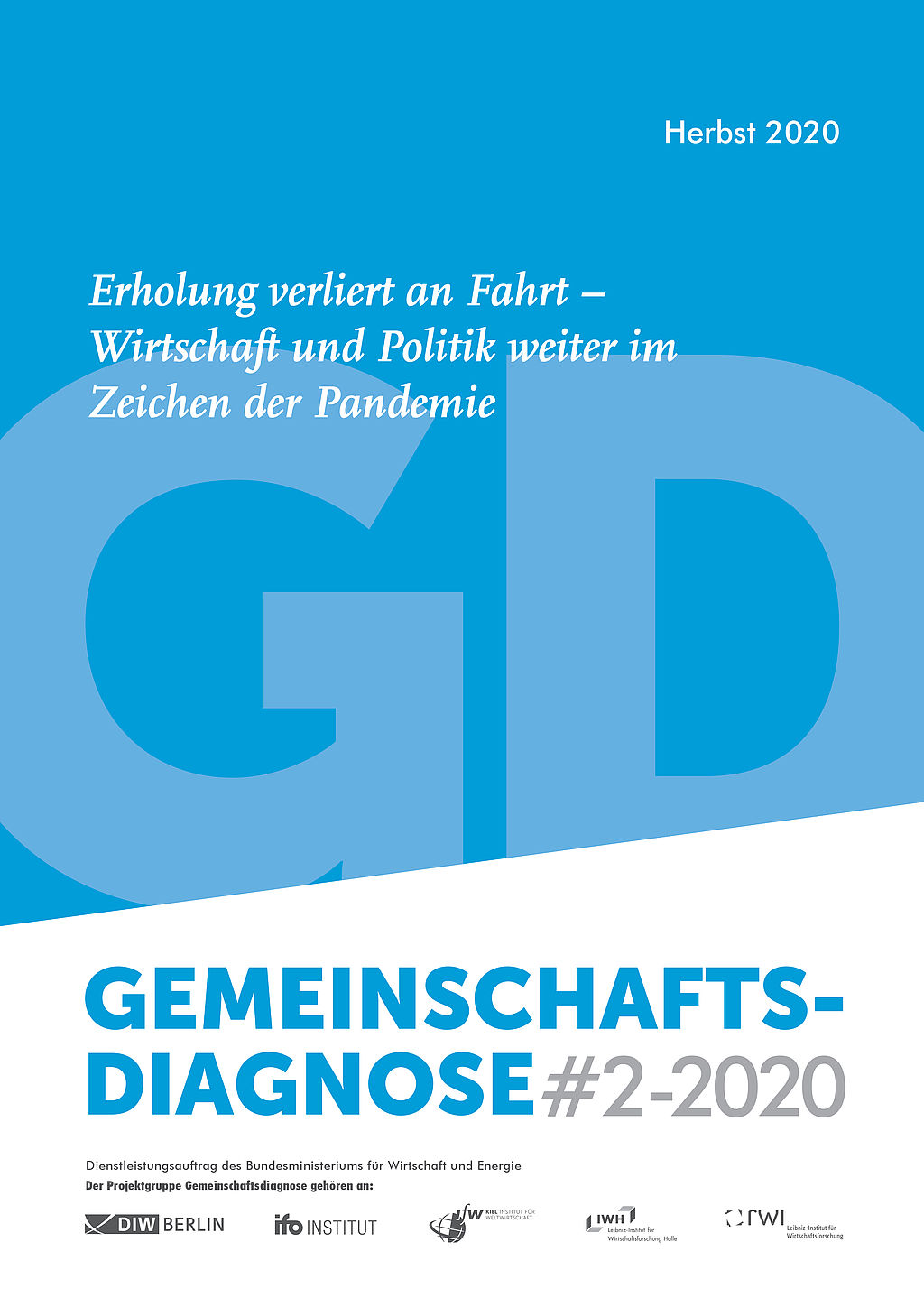Economic slump in East Germany not as severe as in Germany as a whole ‒ Implications of the Joint Economic Forecast and new data for East Germany
This is indicated by recently published data on economic output in the federal states: In the first half of 2020, production in East Germany was 5.6% below the level of the same period in the previous year, while in Germany as a whole it was 6.6%. One reason for the somewhat smaller decline is the lower weight of manufacturing industry and in particular car production in East Germany, as this production came temporarily to a complete standstill. In Saxony and Thuringia, where motor industries are, like in West Germany, quite important, the economic slump was hardly less severe, at 6.5% and 6.3% respectively.
Another reason why production is likely to be hit less severe in the east is that public service providers have, with 25% of total gross value added, more weight than in West Germany (18%), since this sector of the economy remains quite stable during the crisis. Finally, according to ifo business surveys, retail companies assess their situation in the east somewhat more favorably than in the west, which suggests more robust private consumption. One reason for this is that disposable income of private households in East Germany as a whole are supported by a strong pension adjustment of 3.9% this year. Moreover, the comparatively low infection rates so far have put less strain than elsewhere on the part of consumption that is associated with social contacts. The marked increase in infection numbers in the capital during autumn is a risk for the Berlin service sector, but also for the economy in East Ger¬many as a whole.
“Assuming that another shutdown can be avoided in Berlin, as in the rest of Ger-many, East Germany’s gross domestic product is likely to fall by 2.9% in 2020,” says Oliver Holtemöller, Head of Department Macroeconomics and Vice President at the Halle Institute for Economic Research (IWH). “In Germany as a whole, it is expected to fall by 5.4%.” For 2021, growth is forecast to reach 3.6% in East Germany (Ger¬many: 4.7%). The East German unemployment rate as defined by the Federal Employment Agency is expected to be 7.4% in 2020 and 7.2% in 2021.
Joint Economic Forecast, autumn 2020 report:
Joint Economic Forecast: Recovery Loses Momentum ‒ Economy and Politics Still Shaped by the Pandemic. October 2020. Kiel 2020.
Whom to contact
For Researchers

Vice President Department Head
If you have any further questions please contact me.
+49 345 7753-800 Request per E-MailFor Journalists

Press Officer
If you have any further questions please contact me.
+49 345 7753-765 Request per E-MailIWH list of experts
The IWH list of experts provides an overview of IWH research topics and the researchers and scientists in these areas. The relevant experts for the topics listed there can be reached for questions as usual through the IWH Press Office.
Related Publications

Erholung verliert an Fahrt – Wirtschaft und Politik weiter im Zeichen der Pandemie
in: Dienstleistungsauftrag des Bundesministeriums für Wirtschaft und Energie, 2, 2020
Abstract
Infolge der im In- und Ausland ergriffenen Maßnahmen zur Eindämmung der Corona-Pandemie ist die deutsche Wirtschaftsleistung in der ersten Jahreshälfte drastisch gesunken, wobei sich der Einbruch auf die Monate März und April konzentrierte. Schon im Mai setzte eine kräftige Gegenbewegung ein, die sich in nahezu allen Branchen bis zum aktuellen Rand fortsetzte. Dieser Erholungsprozess dürfte aber zunehmend an Fahrt verlieren. Denn Nachholeffekte laufen aus, einige Branchen sind weiterhin erheblichen Einschränkungen ausgesetzt und die für die deutsche Wirtschaft wichtige globale Investitionstätigkeit dürfte noch für einige Zeit geschwächt bleiben. Die Institute erwarten daher nach einem Rückgang des Bruttoinlandsproduktes um 5,4% in diesem Jahr nur ein Zuwachs um 4,7% im kommenden Jahr und 2,7% im Jahr 2022. Sie revidieren damit ihre Prognose gegenüber dem Frühjahr für das laufende und das kommende Jahr um jeweils gut 1 Prozentpunkt nach unten. Grund dafür ist, dass der weitere Erholungsprozess nunmehr etwas schwächer eingeschätzt wird als noch im Frühjahr.



